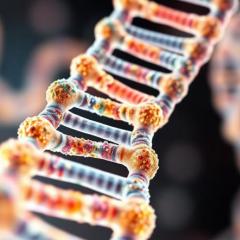By Dr Fiona McMillan
Asthma is a chronic lung condition that affects more than 2 million Australians. During an asthma attack, inflammation of the airways causes chest tightness and shortness of breath. Depending on the individual and the trigger, these breathing difficulties can range from mild to life threatening. Allergies to common environmental agents such as grass pollens or dust mites are a prominent cause of asthma. While our understanding of the immune system’s role in asthma has increased substantially in recent years, the underlying mechanisms are still not fully known. As such, while there are numerous treatments for the symptoms of asthma, there is still no way to cure or prevent it.
UQDI’s Associate Professor Ray Steptoe believes the key to stopping asthma at its source lies in a class of immune cells called memory T-cells. In allergic asthma, these cells are primed to react to normally benign triggers, such as small protein fragments found in pollen, dust or food. When memory T-cells encounter such allergens, they swiftly convert into active immune cells that multiply rapidly and attempt to eliminate the perceived threat. Consequently, the airways become inflamed leading to the symptoms of asthma.
Once an allergy has developed, a specific population of memory T-cells becomes established in the body. They are always on the hunt for that allergen and they respond quickly to it. In the case of seasonal allergies, these triggers can come and go with levels of pollen in the environment. Other triggers can be more continuous, meaning little respite from immune flare-ups.
“These memory T cells must be ‘turned off' to effectively treat allergic asthma,” says Steptoe.
It was once thought that nothing could switch off memory T-cells, but research done by Steptoe and his research team have shown that this is not the case, making it possible, for example, to stop an allergic immune reaction at its source. The trick now, is to find a way to precisely turn off a specific set of memory T-cells (those associated with a particular allergen) while leaving beneficial immune responses intact. In work currently underway, Associate Professor Steptoe’s team is addressing this issue.
Steptoe is looking at the changes that occur in memory T-cells as they are turned off. By determining which genes are activated and deactivated during this process, he is gaining a clearer understanding of the pathways involved in memory T-cell responses. Using this information, he and his colleagues are exploring a new therapeutic approach aimed at teaching tolerance to memory T-cells, particularly those involved in asthma flare-ups.
His research is funded by NHMRC and Asthma Foundation Queensland.
Media: UQDI Communications Manager Kate Templeman, +61 7 3443 7027 or 0409 916 801, k.templeman@uq.edu.au



